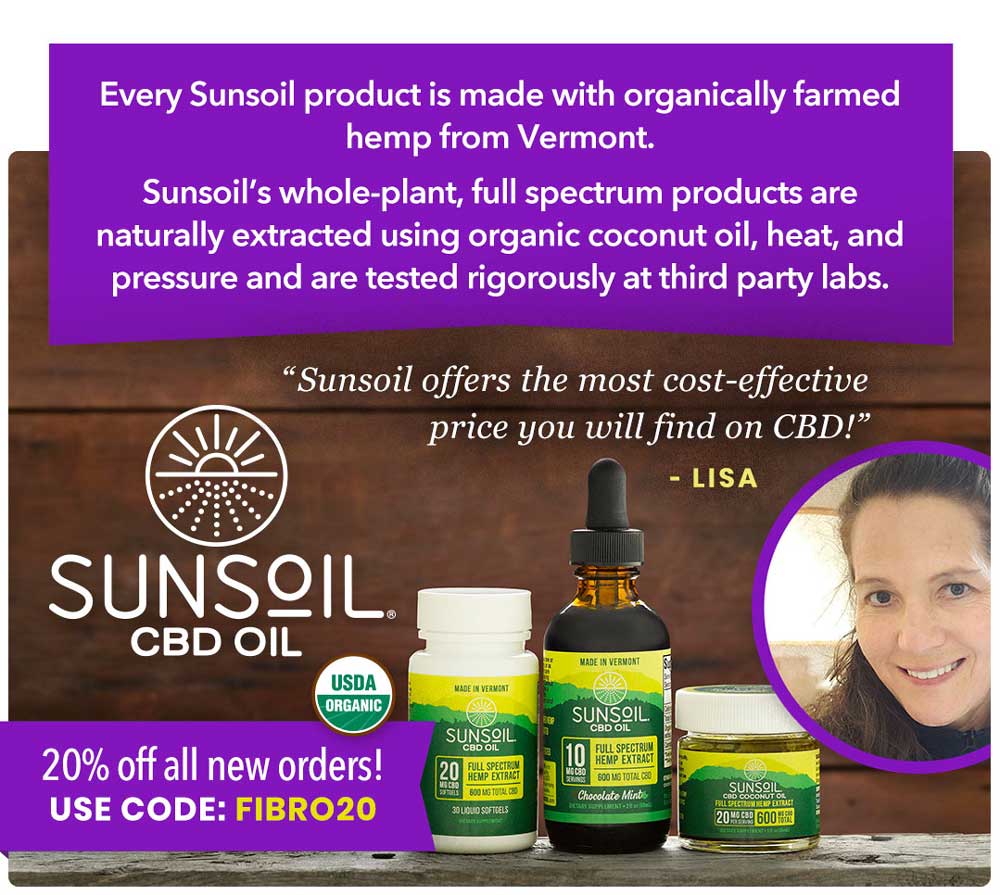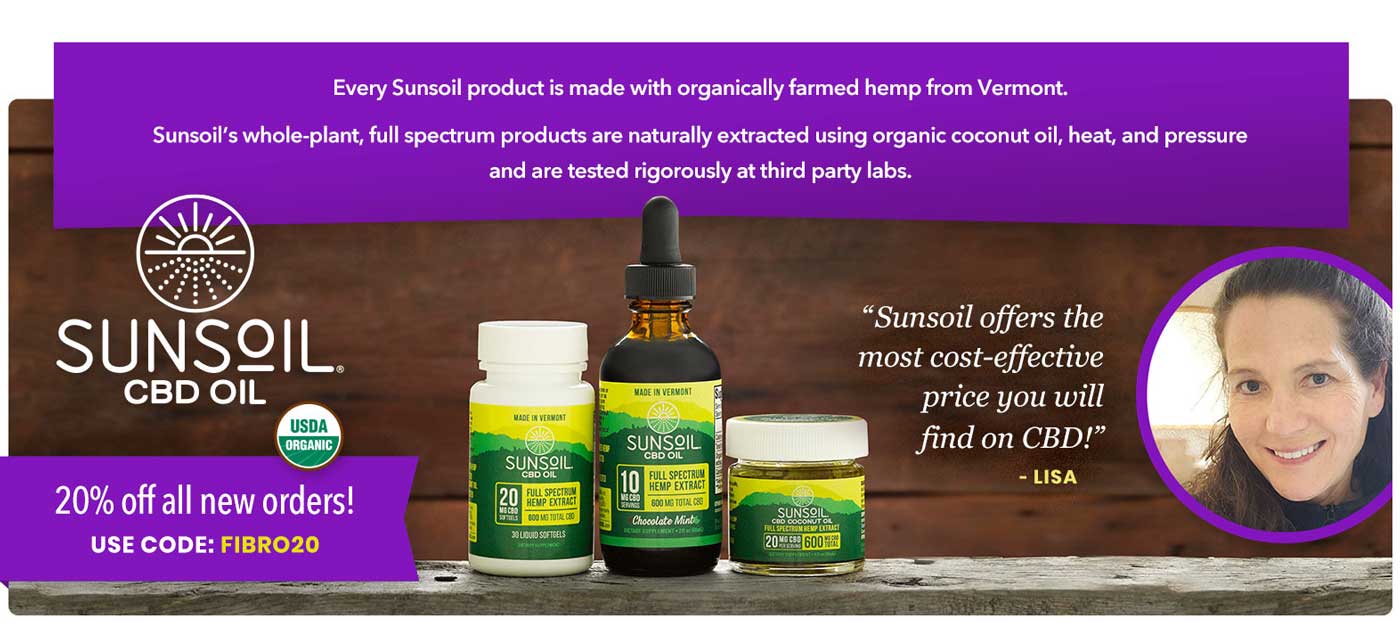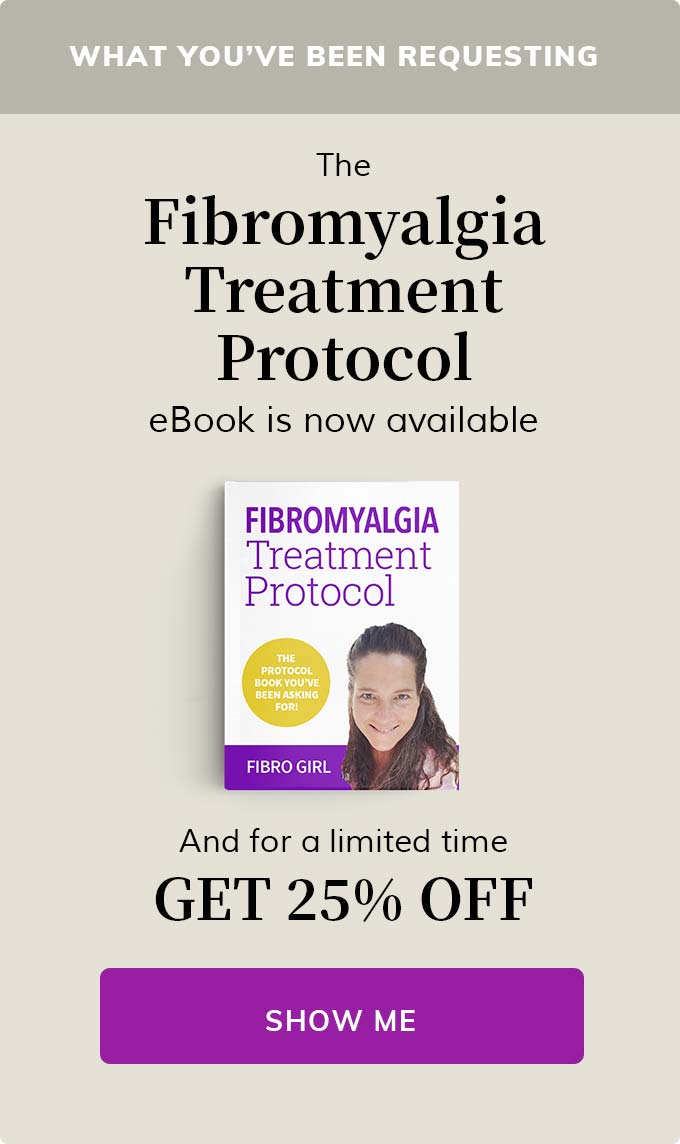Treatment For
Fibromyalgia Knee Pain
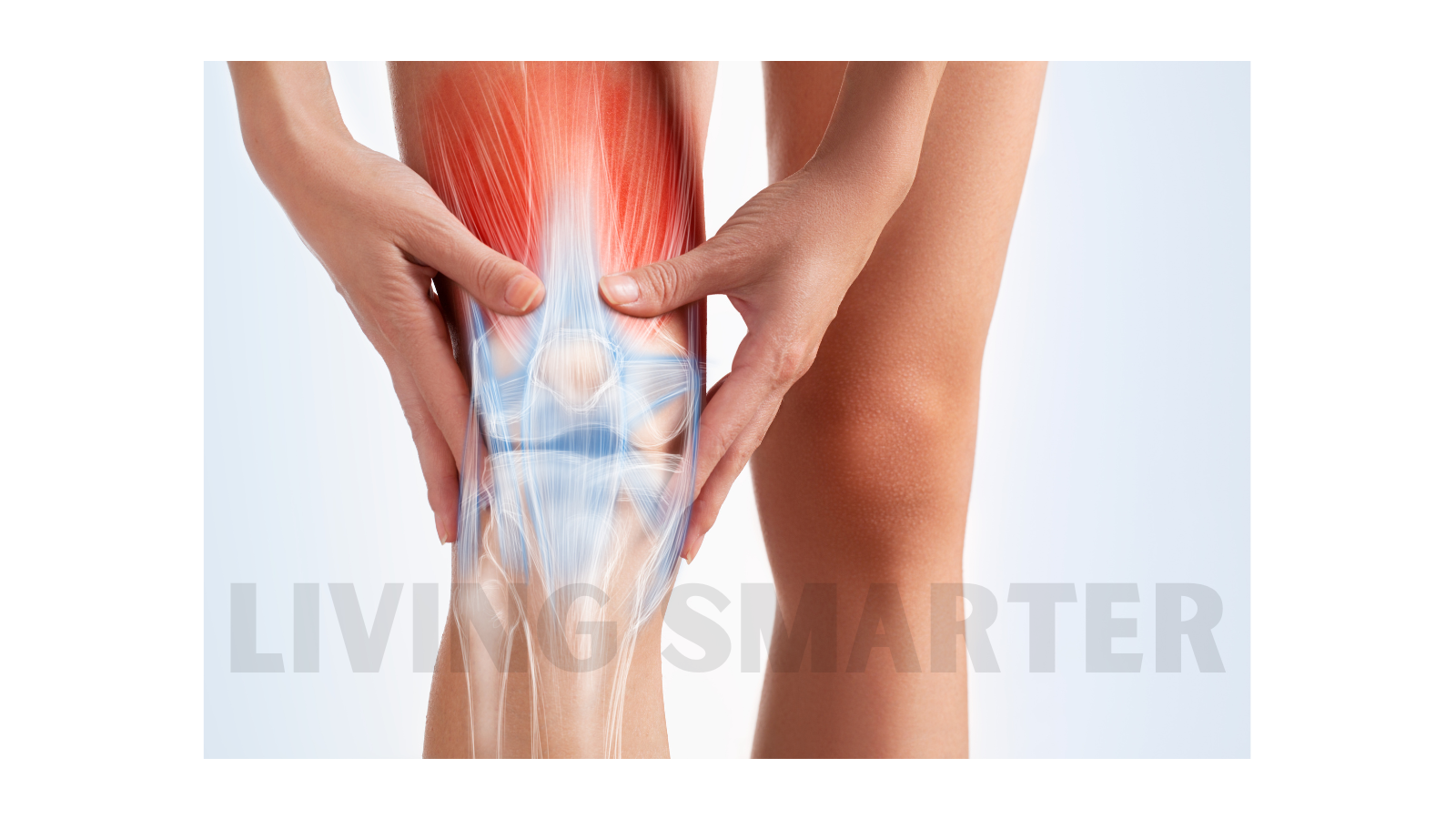
Fibromyalgia knee pain can be a result of many things and not all are directly attributed to fibromyalgia, but with tender and trigger points compounding this area, it is very common to have fibro related knee pain.
Two of the eighteen fibromyalgia tender points are located around the knee area, on both sides. Various activities can exacerbate fibromyalgia knee pain. Tight muscles, tendons and ligaments within close proximity can also increase pain in this vulnerable area.
Although a fibromyalgia diagnosis includes much more than eighteen tender points, there are still some areas like the knees that tend to affect more of the surrounding areas; this is likely due to the weight bearing nature and any associated joint issues.
Also the SS (symptom severity) evaluation test can be helpful in a decision to treat these more vulnerable areas of the fibro body.
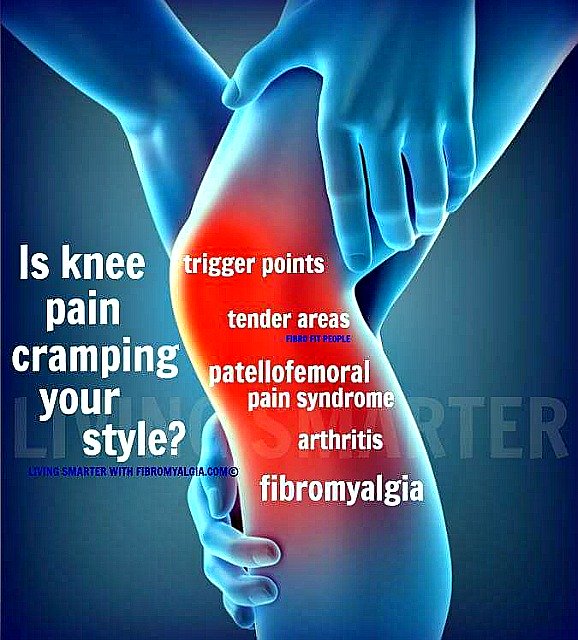 Fibromyalgia Knee Pain
Fibromyalgia Knee PainAs well, the trigger points that we often refer to can also cause radiating pain around the knee, up and down the leg and into the hip flexors and lower back.
(NOTE : Related article links are at the bottom of this article )
Fibromyalgia knee pain can cause increased symptoms when standing, especially for prolonged periods of time, and more in the latter part of the day for those with any kind of standing job.
Also, even excessive sitting at a desk and/or lack of regular range of motion within this area can cause painful symptoms.
This may be attributed to a strain or tightness within the quadrant around the sartorius muscle and perpetual tightness in the hamstrings which also ‘pull’ on the knee and can contribute to TRP’s or trigger points around the knee, radiating upward into the groin and hip flexors and also downward into the shins and ankles.
Do you have fibromyalgia knee pain?
Do
you experience pain in your knees upon standing from a sitting position? Do
your knees often feel like they are buckling under you while standing in one
place or while walking? This could be due to active or latent trigger points around the leg muscles.
Do you find it especially hard or nearly impossible to engage in certain
activities of daily living like cleaning a bathtub or a floor where kneeling or
bending is required?
These are all common within the fibro body, especially due to the weight
bearing nature of these tender and trigger point areas.
Like
other joints, this area of the fibro body is also sensitive to weather and
temperature changes and may cause a feeling of extreme weakness and increased
pain around the joint and soft tissue surrounding the knee.
How
do we mitigate fibromyalgia knee pain
to increase range of motion and agility
within the fibro body?
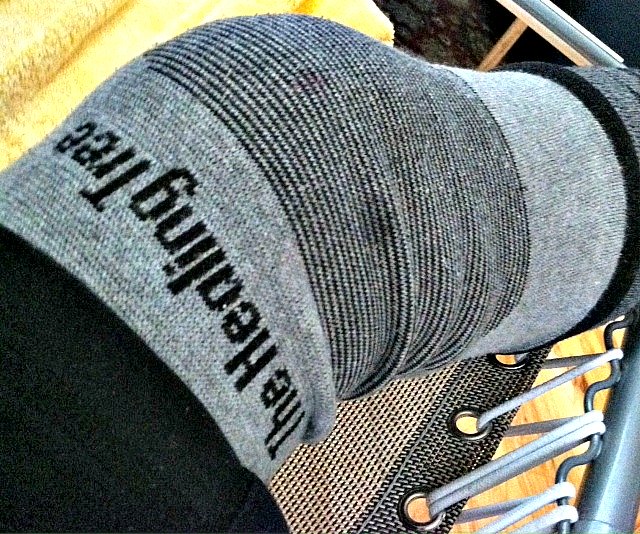
With fibromyalgia knee pain, we
are best to keep the blood flowing around these tender areas and work on
staying conditioned with non-invasive remedies and strength applications where
possible. Compression is a great way to naturally increase circulation.
Compression wear is a non invasive remedy for knee pain that gently hugs and supports the joint, trigger points and soft tissue around the knee. Some compression garments include infra-red technology for even great benefit.
Knee
compression garments like this one shown (the healing tree) can be worn any time of day. However, not all compression garments are appropriate for those with fibromyalgia due the differing degrees of 'tightness'.
Experiment to find what rate of compression works best. This one shown exerts a smaller degree of compression but also includes the infra-red technology which in itself will increase circulation and oxygen flow around tender and trigger points of the body.
Using light ankle weights and performing leg lifts to increase leg strength is also essential. It does not have to be a great deal of weight, just enough to start activating muscle and increasing strength slowly.
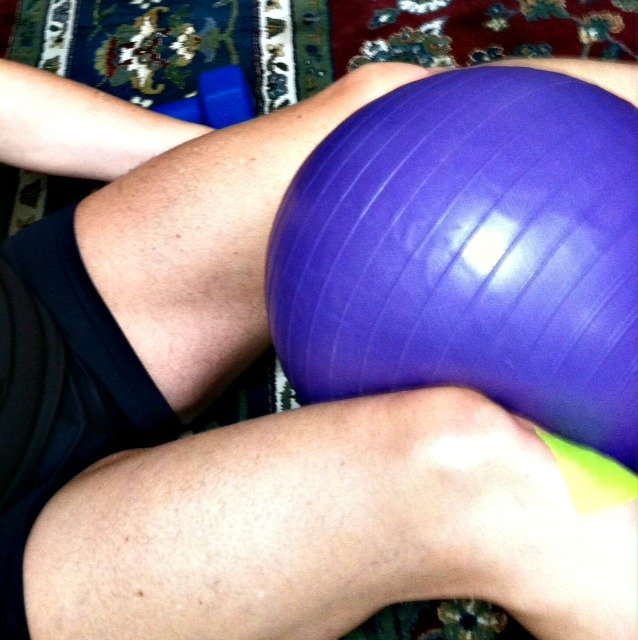
The adjacent picture also
shows a simple way to lightly ‘compress’ the area around the knees by using a
small exercise ball and just squeezing in between the knees. Compress just enough against the 'tender' tendons and soft tissue..
Simply squeeze the
ball... hold... and release. Use 8-10 repetitions for 1-2 sets.
Remember that healthy muscle protects bone and healthy bone/joints protects muscle.
Gentle Compression socks for circulation
cand knee support
These are some of the best compression socks I have found. They not only increase circulation, but they also support the knees. Check out the various styles and colors.
What about ice and heat for fibromyalgia
knee pain?
Alternating
ice and heat is always a good idea. Try 5-10 minutes alternating hot and cold. However, after
exercise or strenuous activity, I find that ice or cold to decrease any soreness is best if tolerated. If you don’t tolerate the
extreme cold of an ice pack, wrap the pack in a towel and work up to tolerance.
For those who are a little more adventurous, how about a hot/cold shower? This is simply alternating hot and cold water for about 20-30 seconds at a time. Focusing on a particular body part like the knees or lower back will increase circulation without undue stress to the entire fibro body.
I use the same wraps for my knees that I use for around my head during intense migraines. However, with a headache, the cold part only goes around the back of the head, for knees, it wraps around the entire knee. Check out the migraine article if you like for the cold wrap. Very easy to use on the knees as there is no need to hold it on them.
Be careful with blood pressure or other issues that may not respond well to extreme temperature variance.
Additional Therapies
It
is also important to note that chronic lower back pain and tight hamstring
muscles (back of legs) can also exacerbate knee pain. If your lower back is
‘out’ or you are over compensating in any way, often the knees can take on the
added strain.
SI joint pain (in the dimples of the lower back) is also connected to knee pain, so regular care for the
spine and lower back can improve pain in the lower extremities and knees as
well.
Knee pain can also be exacerbated by tight fascia. Please visit the article on Myofascial Release by using the Sitemap and/or related links below. Also, join me on my facebook page FibroFitPeople1.
Bowen therapy and/or Myotherapy can be helpful for fibromyalgia. This can be effective for related symptoms that affect both muscle and fibro tender areas. Check for a qualifed Bowen therapist in your area. Also refer to related links below.
Another effective and less invasive procedure than something like cortisone for knee pain and arthritis involves cartilage injections. I have personally used these injections for my knees over the last three years. Check in your area for a holistic joint doctor. Our bodies naturally lose cartilage as we age, so it is something we need anyway. Often pain for by insurance.
Prolozone therapy is another option for knees. This therapy utilizes oxygen, and may be injected with a natural anti-inflammatory into the surrounding areas of the knee joint. Not always paid by insurance.
I have personally utilized stem cell injections as well for arthritis in both knees and neck but did not get the results I was hoping for. Stem cell Therapy and regenerative medicine is still fairly new, so we continue to follow these and what kind of results people are getting.
More studies also show the dangers of cortisone shots, and I have personally not used them, but be very cautious if you do, as they have been shown to cause side effects and not really get to the root of the problem. If using cortisone, be sure to work closely with your doctor and only utilize on occasion.
Lisa. CT. PT.
Links to other related articles:
Before you leave, my sitemap can provide you with a "God's-eye" view of this website laid out in "outline format".
Stay connected by joining our unique Email here at Fibro Repair Email
Home > Fibromyalgia Symptoms > Fibromyalgia Knee Pain
Didn't find what you were looking for? Search for it:
living-smarter-with-fibromyalgia.com
©2013-2024 All Rights Reserved
FibroFitPeople, LLC ;©2024 All Rights Reserved
